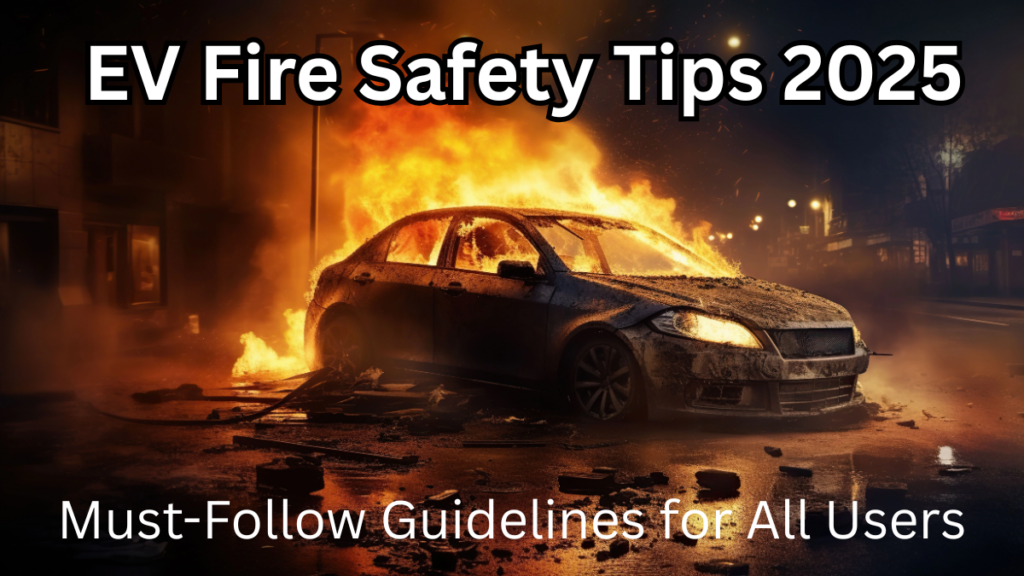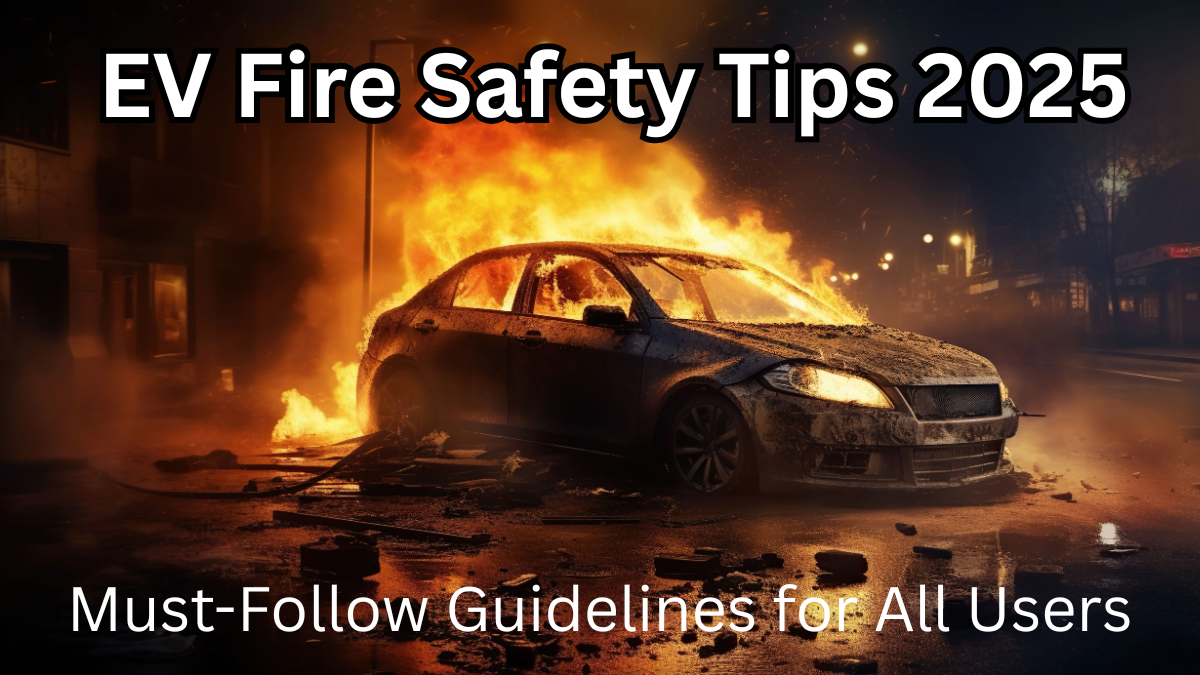As electric vehicles (EVs) become increasingly common on Indian roads in 2025, ensuring user safety—especially fire safety—is more critical than ever. While EVs are engineered with high safety standards, improper charging, battery mishandling, or accidents can still pose risks.
This guide highlights the most important EV fire safety tips and battery precautions 2025 that every EV owner should follow to stay safe and secure.

Why Do EV Fires Happen?
Understanding the root causes of EV fires is key to preventing them.
Common causes include:
-
Overcharging or using faulty charging equipment
-
Damaged or aging battery cells
-
Manufacturing defects in battery systems
-
Exposure to extreme temperatures or collision impacts
-
Using incompatible or uncertified charging cables
Key EV Fire Safety Tips for Every Owner
Charging Safety
-
Always use chargers approved by the manufacturer
-
Avoid charging your EV under direct sunlight or during extreme heat
-
Do not leave your EV charging overnight unattended
Regular Inspections
-
Schedule periodic battery inspections with certified EV technicians
-
Monitor for signs such as excessive heat, reduced range, or battery swelling
Emergency Readiness
-
Keep a Class D fire extinguisher suitable for lithium battery fires in your vehicle
-
Understand emergency exit protocols in your EV model
-
Install a smoke detector near your home charging station
Driving Precautions
-
Avoid deep potholes or waterlogged roads that can damage the battery casing
-
After any collision, have the battery checked—even if external damage seems minimal
Battery Precautions 2025 – What to Do and Avoid
To keep your EV battery in top condition and avoid fire risks, follow these essential battery precautions 2025.
| Do’s | Don’ts |
|---|---|
| Use original chargers from certified brands | Use cheap, non-branded or damaged cables |
| Park in shaded or covered areas during heat | Leave your car under direct sunlight for hours |
| Follow the regular maintenance schedule | Ignore unusual smells, sounds, or warnings |
| Use a surge-protected charging station | Charge the vehicle via standard extension cords |
What to Do If Your EV Catches Fire
If your EV catches fire, your safety should be your top priority. Here’s what you should do:
-
Do not try to put out large fires yourself
-
Evacuate the vehicle immediately and move to a safe distance
-
Call emergency services and inform them it’s an electric vehicle
-
Wait for professionals—EV battery fires can reignite or explode
Future-Proofing EV Safety in 2025
Thanks to advancements in Battery Management Systems and government regulations, EVs in 2025 are safer than ever. But as an EV user, your role in maintaining this safety is vital. Staying informed and following these EV fire safety tips can prevent mishaps and protect both lives and vehicles.
FAQs
What causes most EV fires?
Most EV fires are caused by battery failures due to physical damage, improper charging, or exposure to high heat. Regular maintenance and proper usage significantly reduce these risks.
Is it safe to leave my EV charging overnight?
It’s best to avoid unattended overnight charging unless your charger has automatic shut-off and surge protection. Always charge in a ventilated, fire-safe area.
How often should I get my EV battery serviced?
Ideally, get your battery checked every 6–12 months, or immediately after any accident or sudden performance drops.
Can I charge my EV during rainy or stormy weather?
Charging during storms is not recommended. Use surge-protected chargers and avoid outdoor charging during lightning or heavy rain.
Click here to learn more
